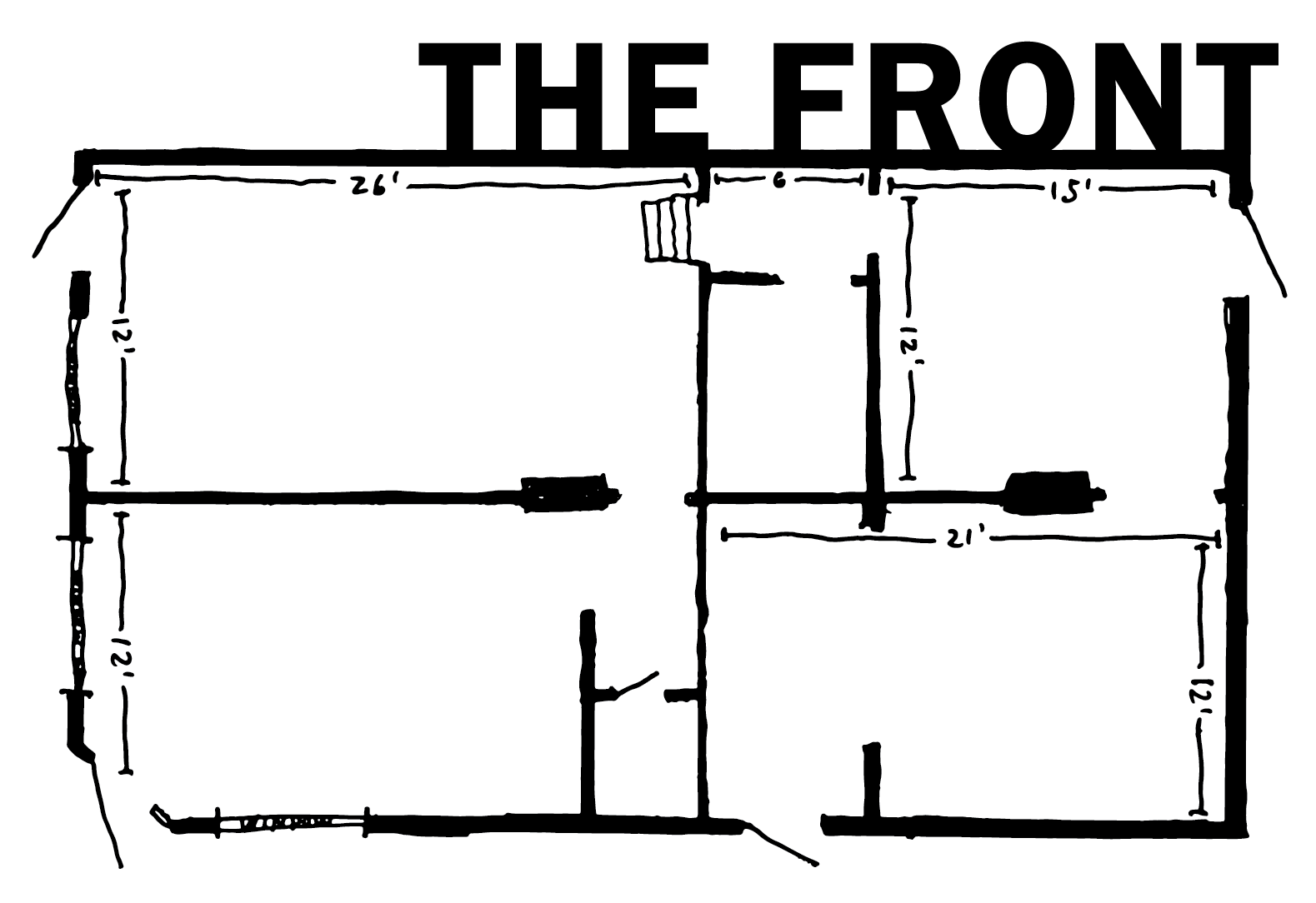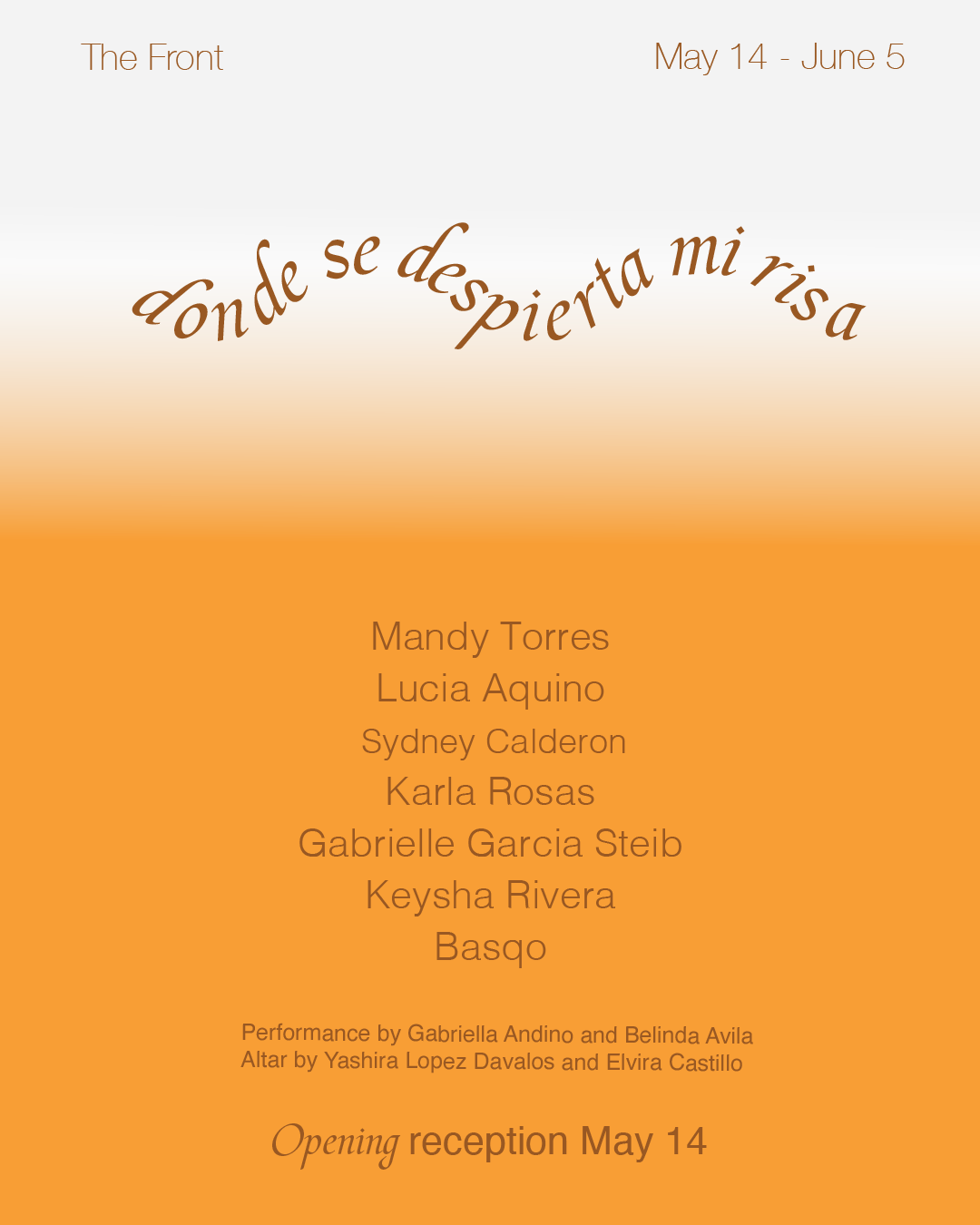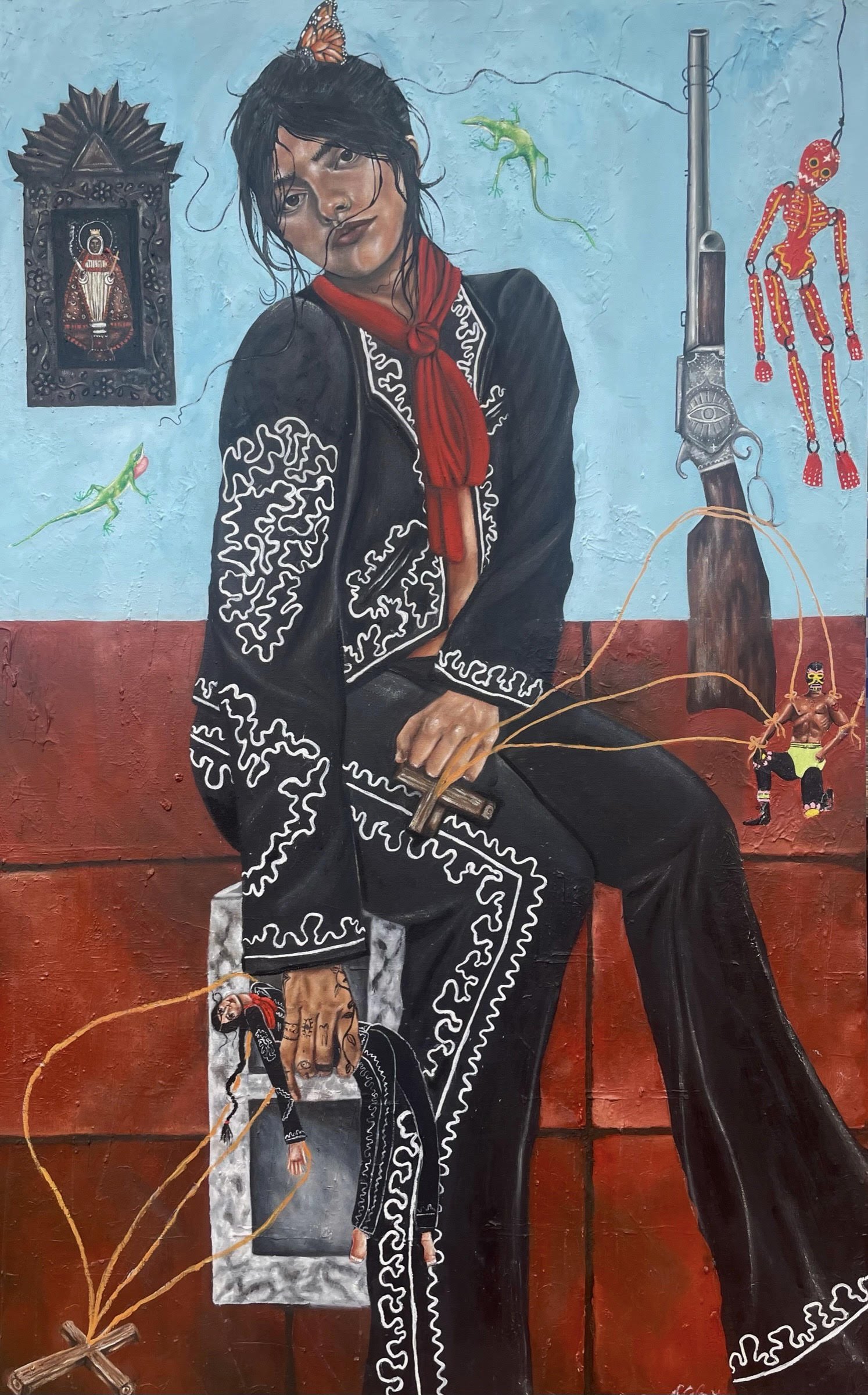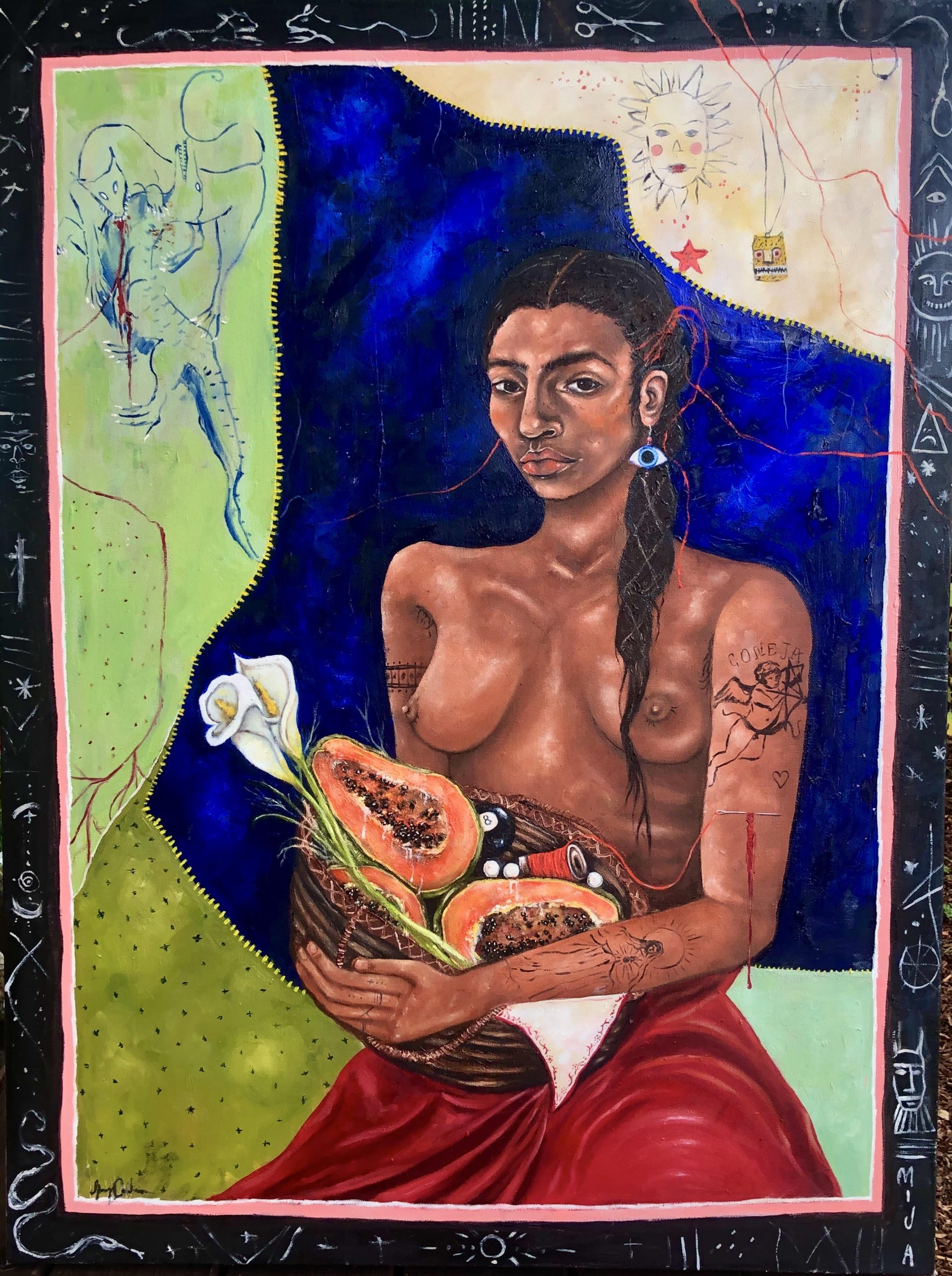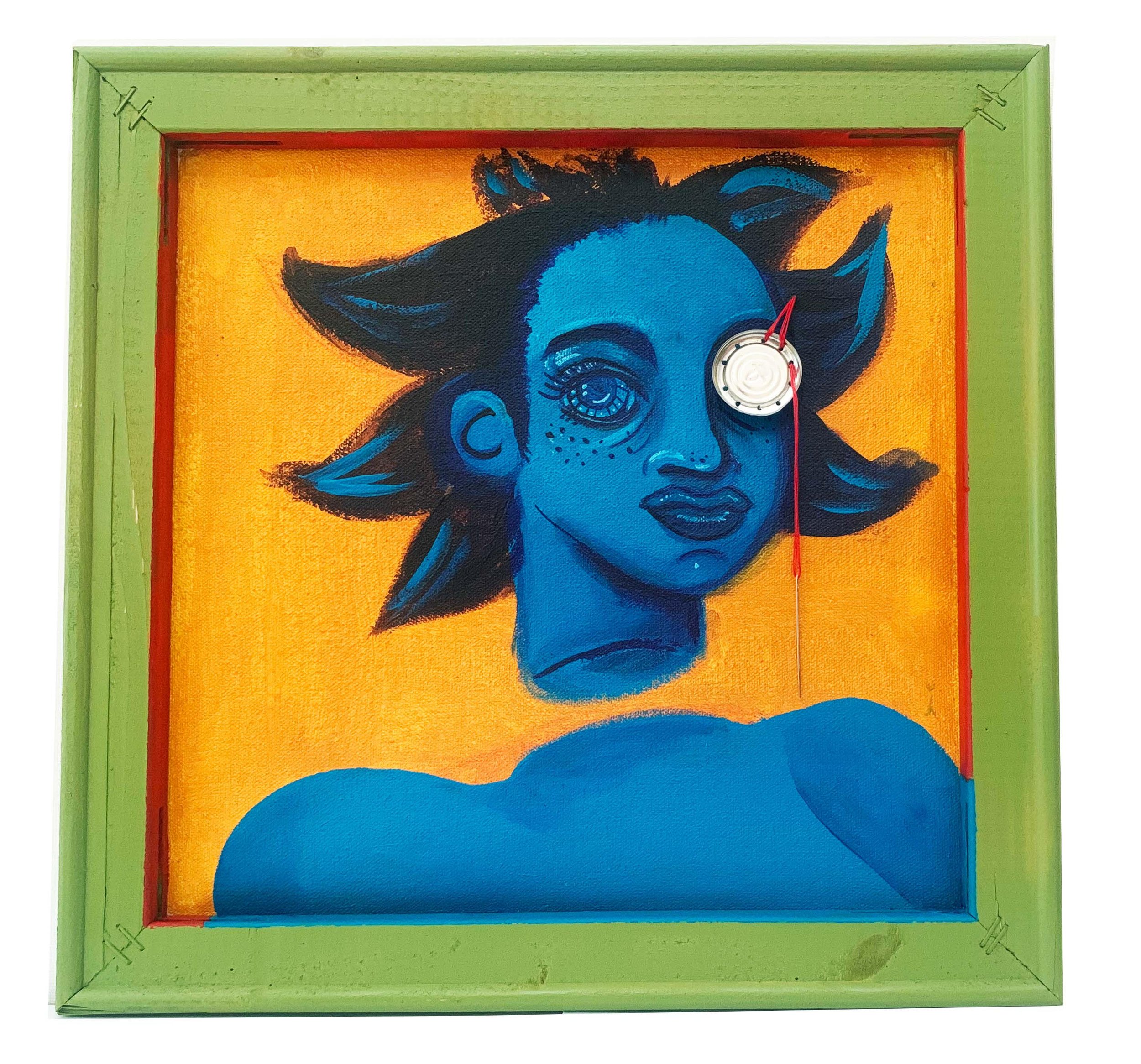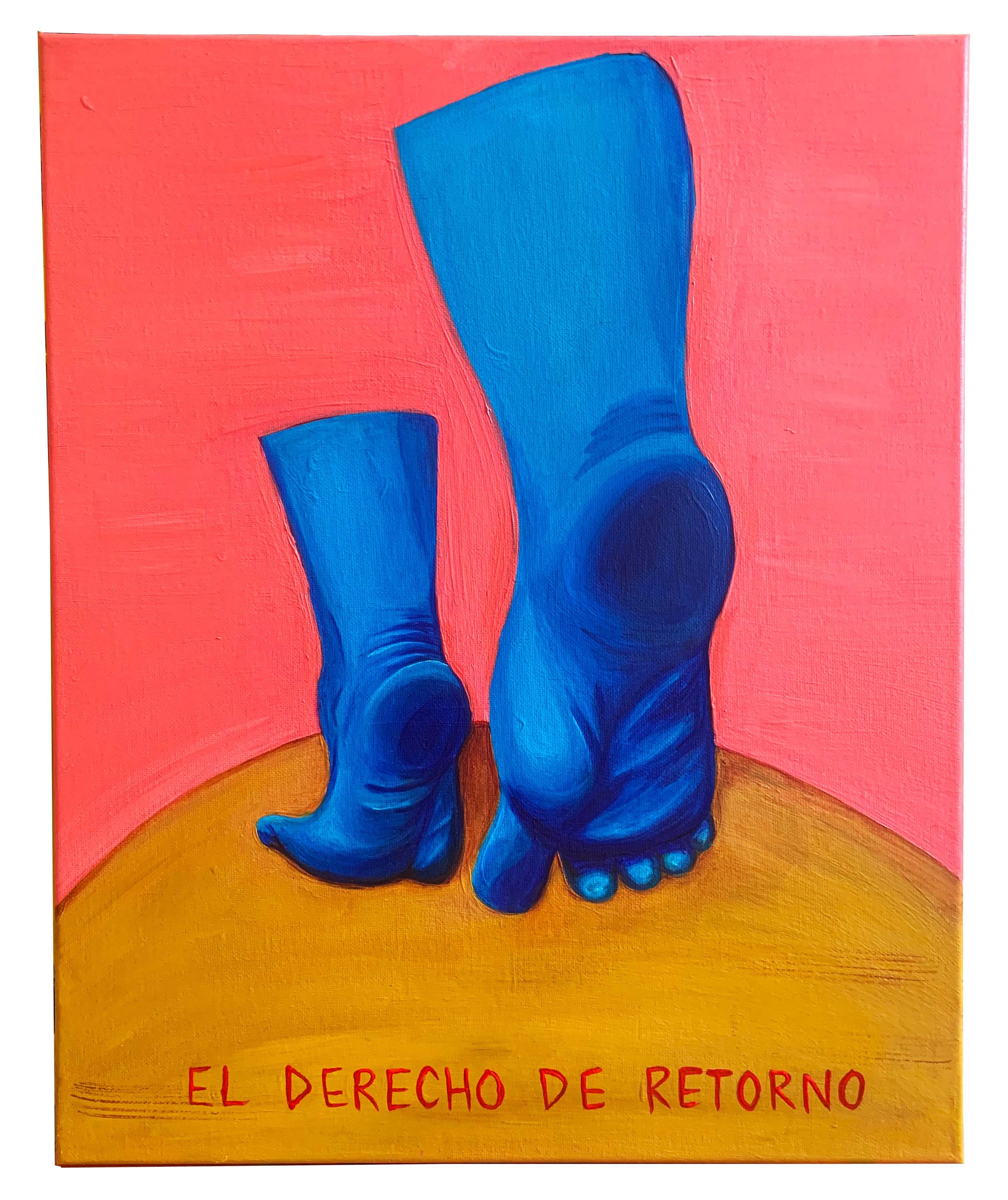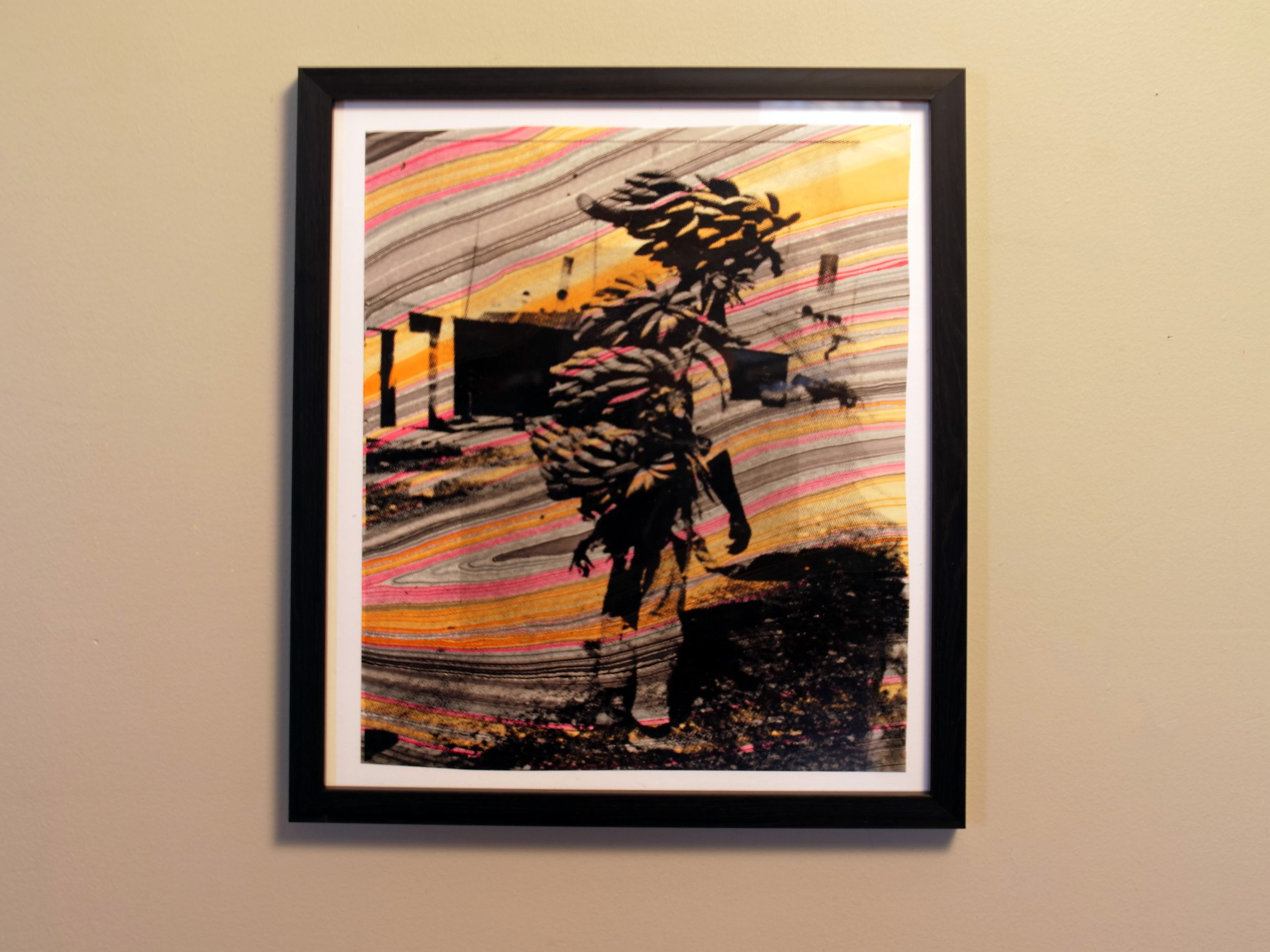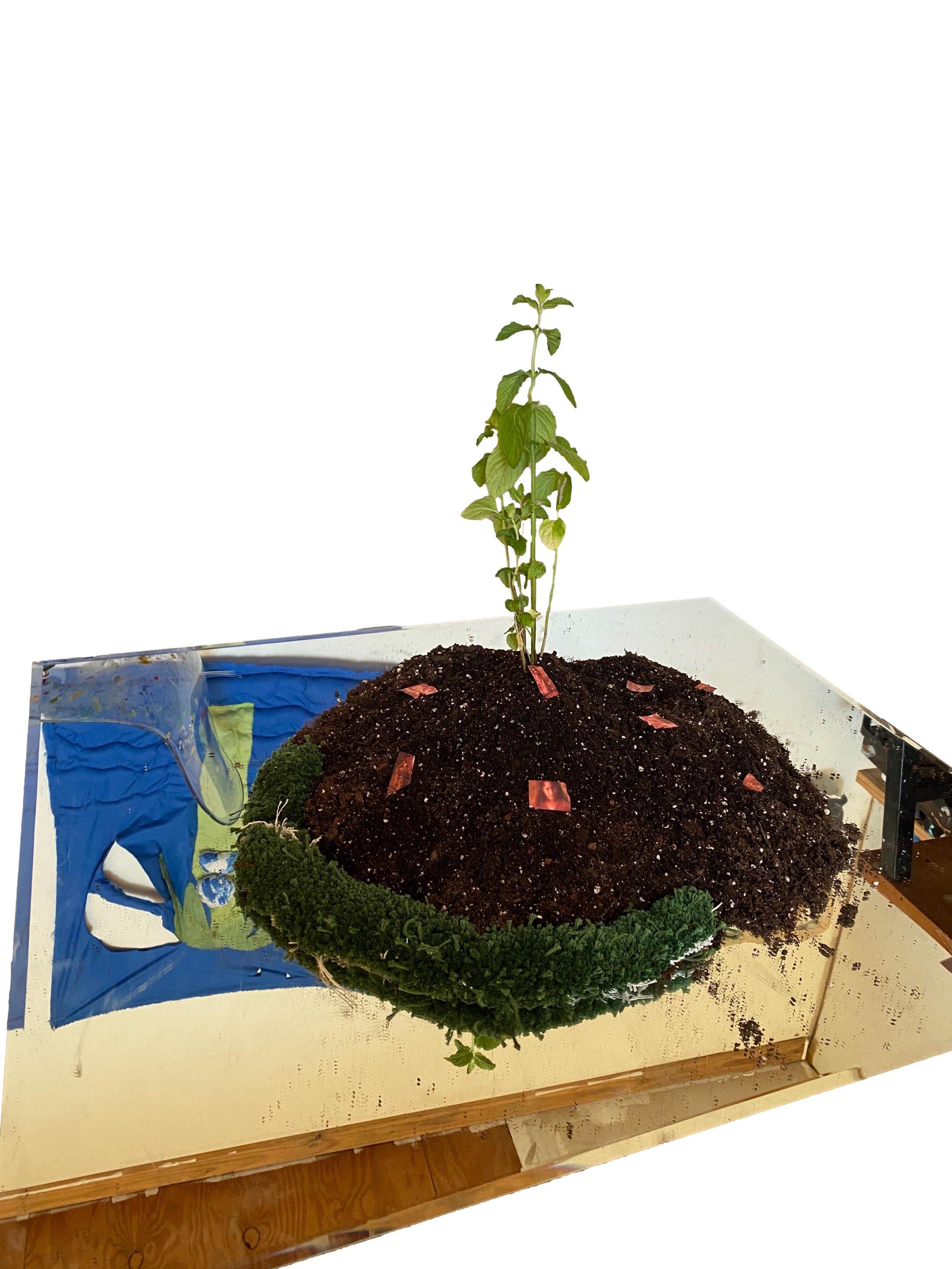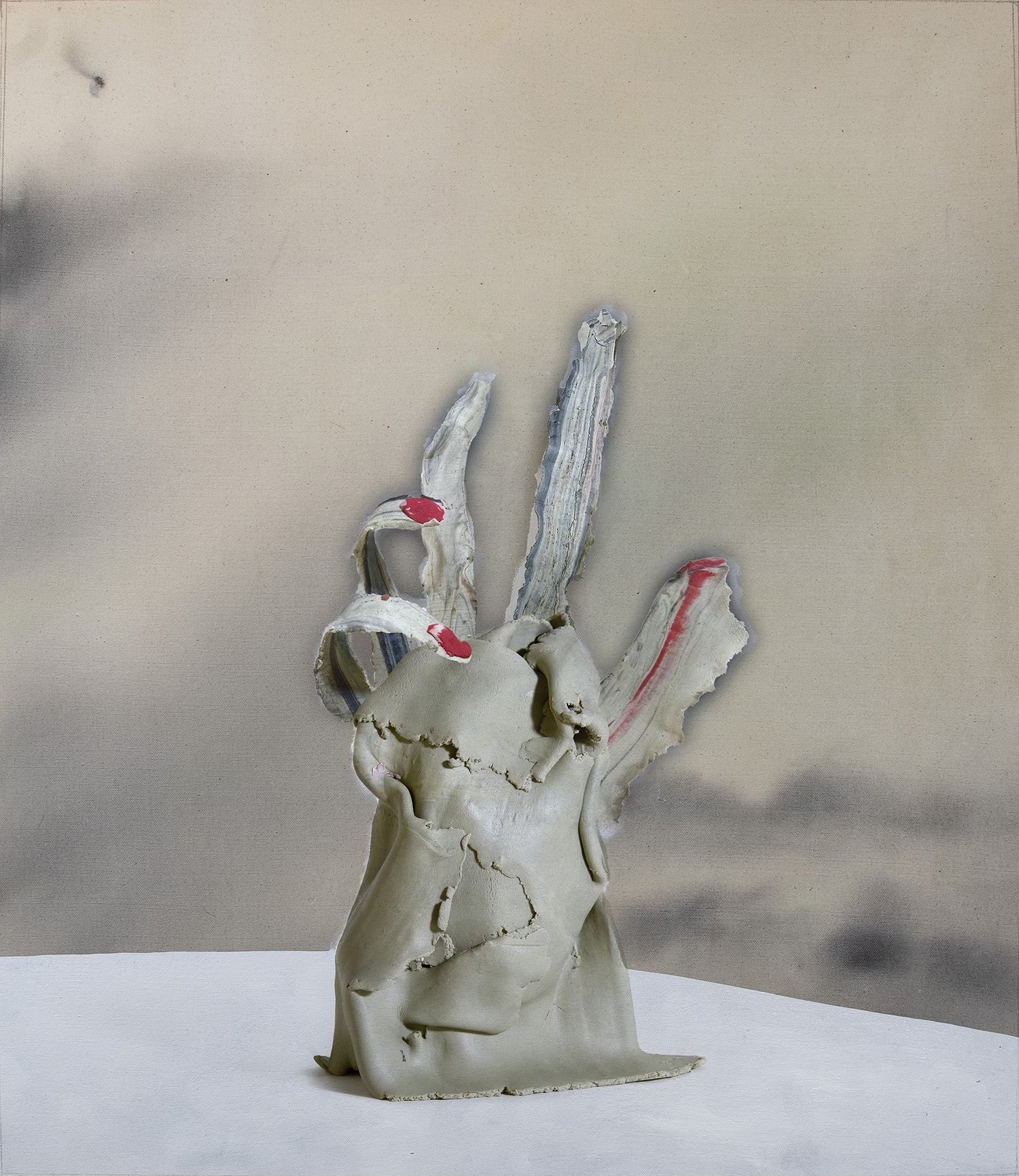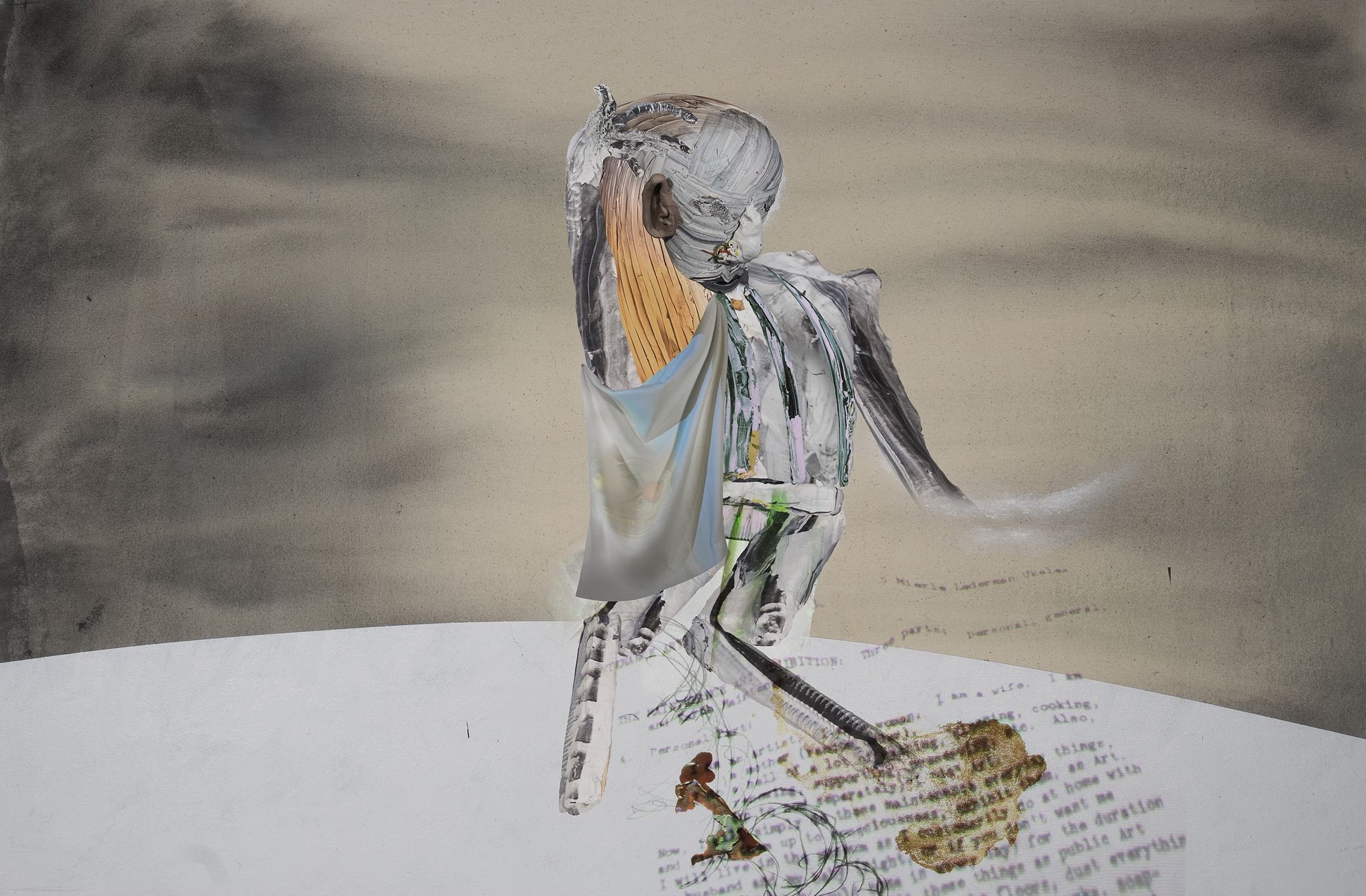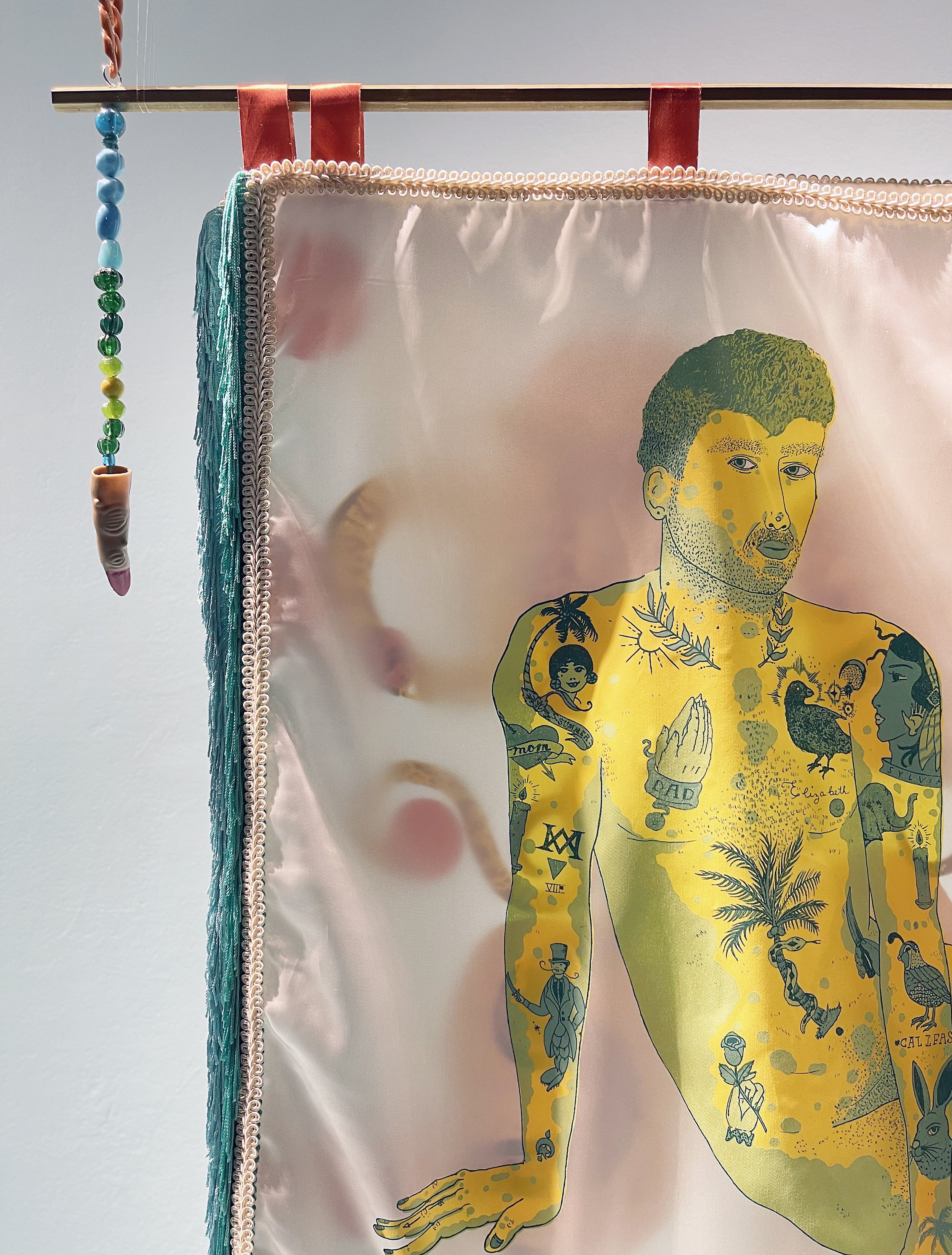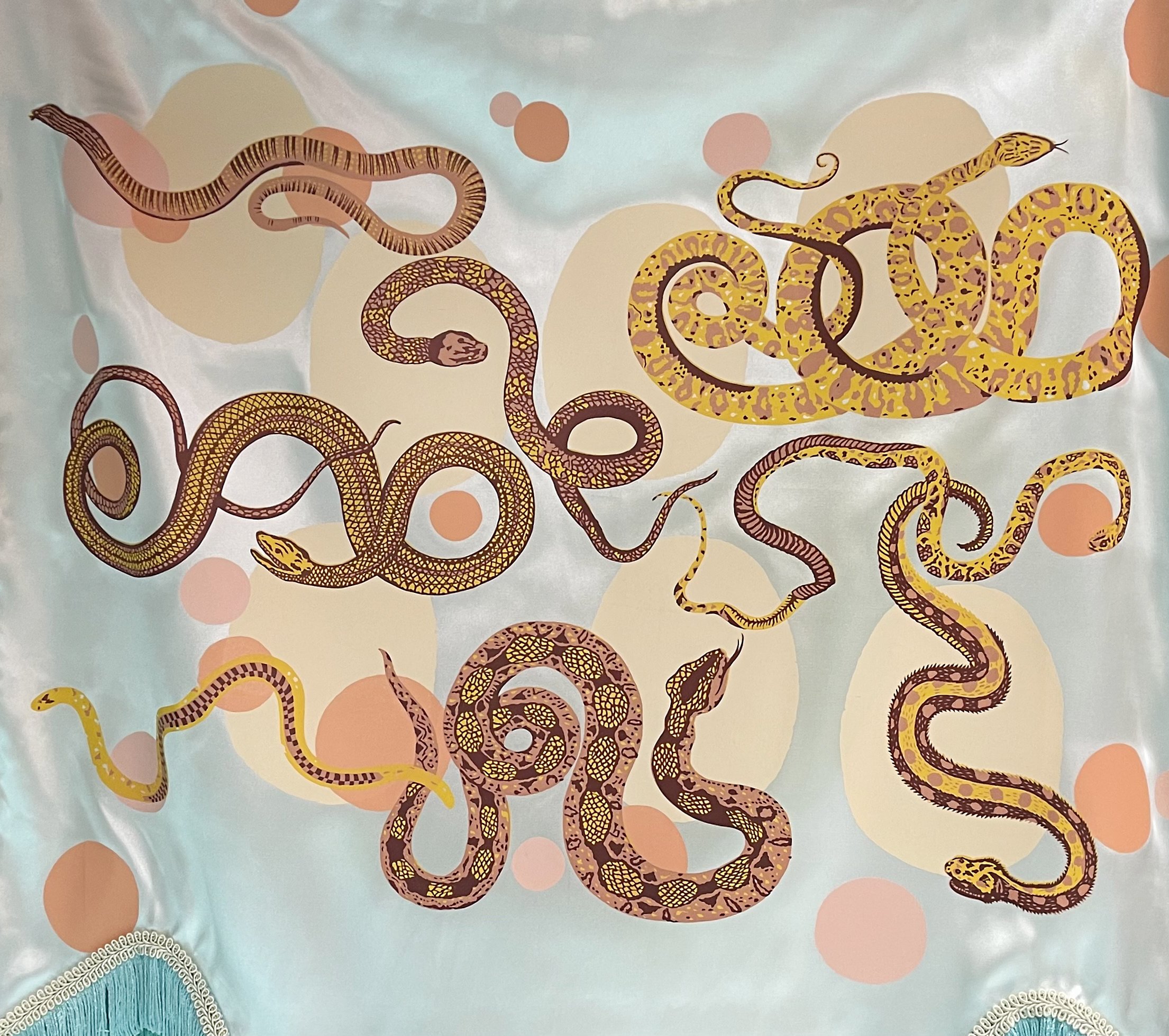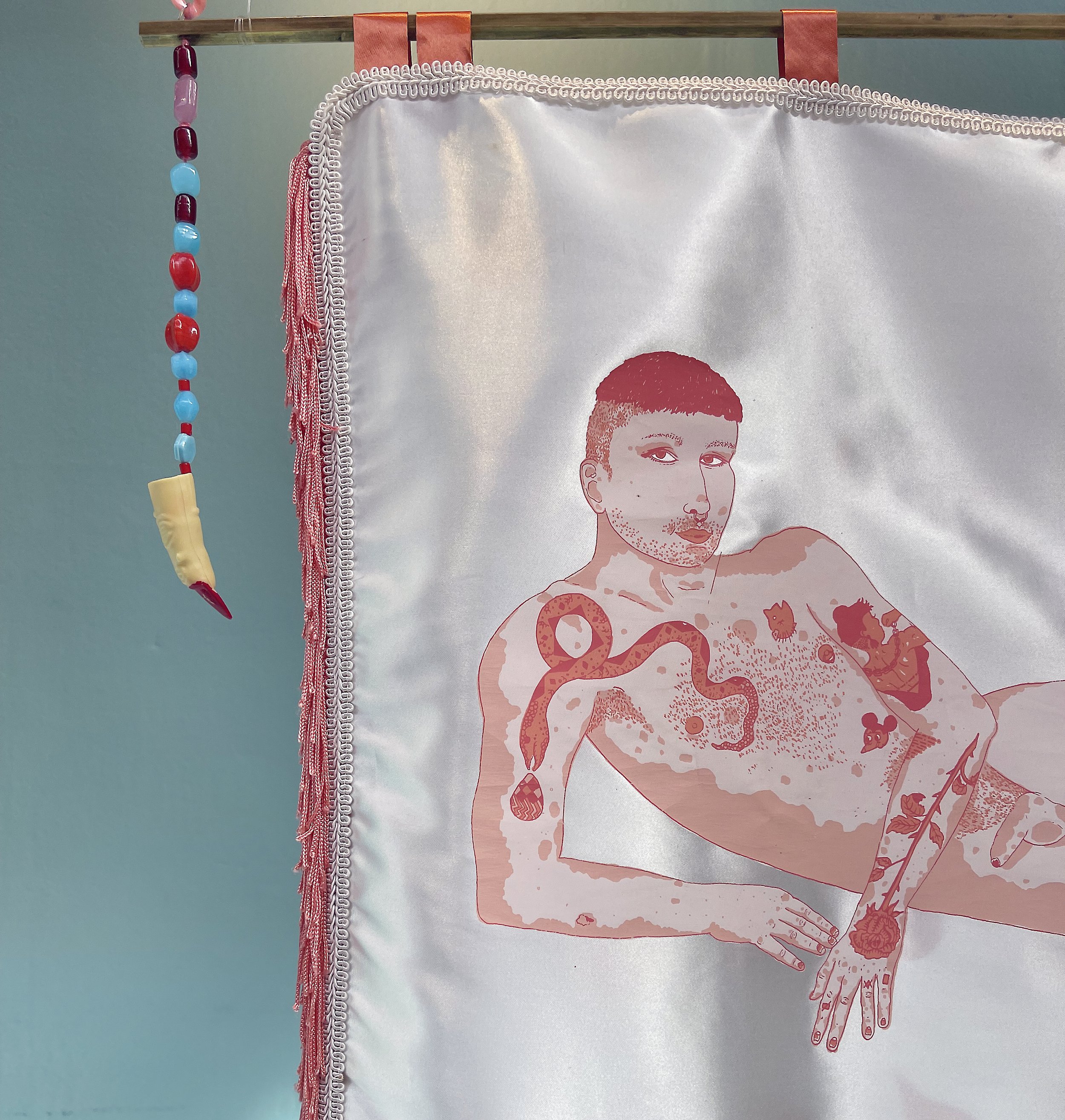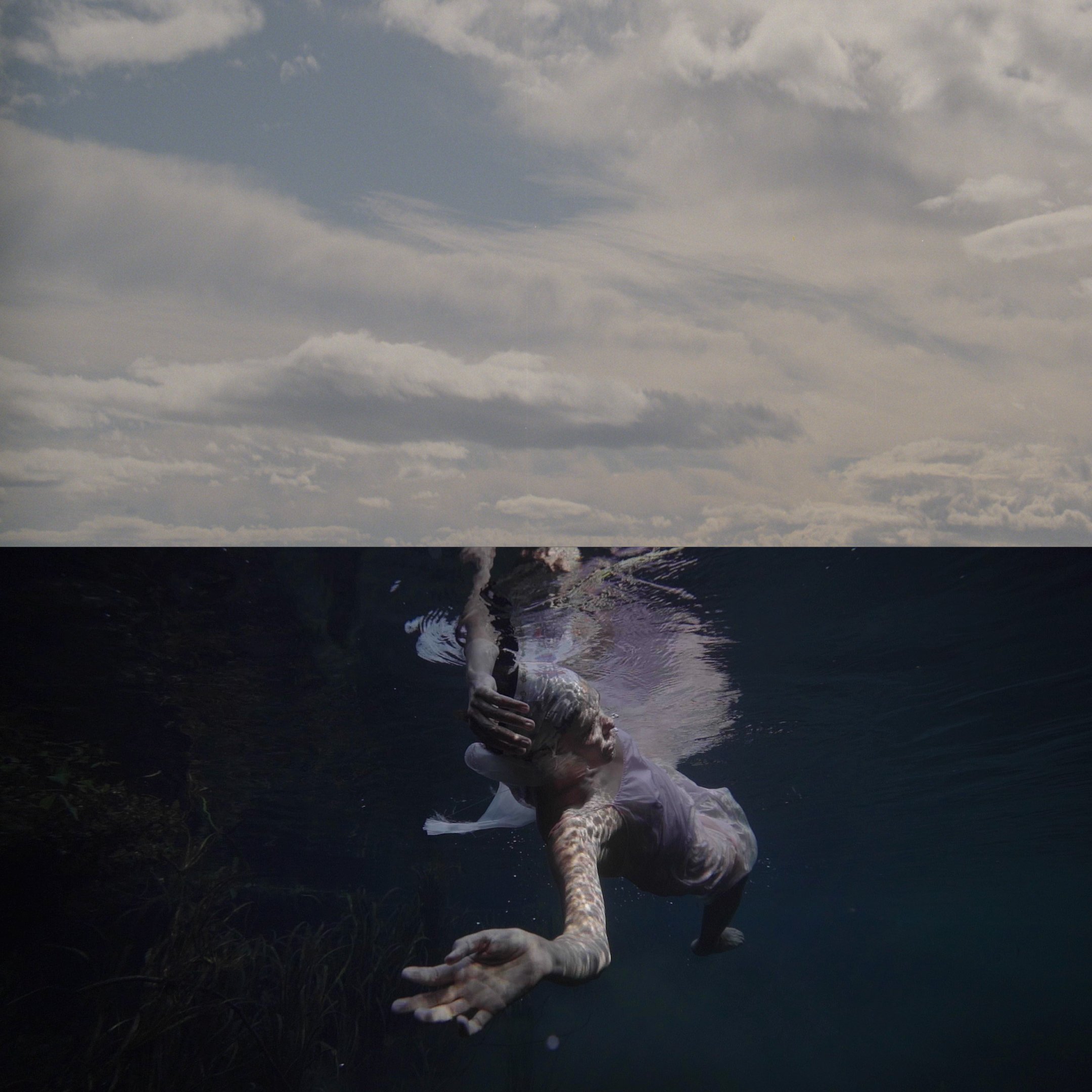May 14 - June 5, 2022
Opening reception Second Saturday, May 14, 6-10pm, with a Performance by Gabriella Andino and Belinda Avila at 7pm.
Gallery hours are Saturdays and Sundays, 12-5pm.
Be sure to check out The St. Claude Art Rag for more info on the Second Saturday Art Openings on St. Claude!
Programing This Month:
Saturday, May 14, 10pm - 2am at Hotel St. Vincent
El Fuego Feminino:
donde se despierta mi risa AFTER PARTY
El Fuego Feminino is a Playero Perreo centrie afterparty and immersive art installation centered around the non binary and non traditionally feminine undertones of Latinx identity. This sweatbox experience of elevated perreo and altars provide artistic context to burning the flags of colonial standards through the fiery feminine energy of perreo and the culture it represents.
To all the artists that participated in "donde se despierta mi risa", a group, artist curated exhibition proposal presented by Keysha Rivera in collaboration with gallery curator Yashira Davalos, we celebrate you.
Curated by Elvira Michelle & Yashira Davalos
Tuesday, May 17, 6:30pm
RUBBER FLOWER poetry hour
Rubber Flower is a monthly reading series and open mic presented by Tilted House, a small book press in New Orleans. The series began in 2017 as a bridge between poetry circles. We welcome everyone to share their work! Poetry is our primary focus, but our open mic segment is also open to musicians and other storytellers. Please come early to sign up, as there is limited space. We also provide a space for anyone who wants to sell their books, zines, broadsides, etc., regardless of whether or not you’re reading. For our May reading, we're mighty happy to introduce our featured readers, fahima ife and Andy Young!
Room 1
Sydney Calderon, Self Portrait in Mariachi Suit, Oil on Canvas, 4 x 2.5 feet.
Sydney Calderon, Dama Con Cojiba, Oil on Canvas, 4 x 3.5 feet.
Karla Rosas, te guardo aunque me duela, Canvas Print, 12 x 12 inches.
Karla Rosas, el derechos de retorno, Canvas Print, 16 x 20 inches.
Gabrielle Garcia, the past is a foreign country, video, sizes vary, https://vimeo.com/432603962
Gabrielle Garcia, Bananero, 15 x 18 inches
Keysha Rivera, Land Reflections, mixed media, Sizes Vary
donde se despierta mi risa
Group Curation
Presented by: Keysha Rivera & Gallery Liason Yashira Lopez Davalos
donde se despierta mi risa is a gathering of artwork that honors the connectivity of identity, language, and place. Using photography, installation, painting, textiles, and sculpture, the artists challenge the expectation of what Latine/x art should look like. The exhibition assesses the presence and absence of Latine art and reflects on the path to creating our own narratives.
Featuring:
Mandy Torres @maandytorres
Lucia Aquino @lucia_0.1_
Sydney Calderon @sydneycalderonart
Karla Rosas maricosas.com
Gabrielle Garcia Steib gabriellegarciasteib.com
Keysha Rivera keysharivera.com
Basqo @basqo_
Exhibition title is from a poem by Dali Ortiz @elestudiodedali
Altar by Elvira Castillo and Yashira Lopez
Performance by Gabriella Andino and Belinda Avila at 7pm on Saturday, May 14.
Room 2
Ryan Leitner, Red Right Hand, Archival ink, acrylic, canvas, photo transfer, 26 x 30 inches, 2022.
Ryan Leitner, Fernando, Archival ink, acrylic, canvas, photo transfer, 21 x 32 inches, 2022.
Inbetweenxst
Ryan Leitner
Over the past few years, I’ve come to realize the vast amount of codeswitching I’ve performed in my life through my myriad homes, cultures, jobs, and relationships. As a navy brat moving from town to town, country to country, this movement kept me from stagnation, but it wasn’t until the pandemic that I realized that I couldn’t do what I always did anymore: endlessly transition, without finding a place to stand. I have no roots. My family has no roots that they acknowledge. And as a queer person, I have chosen ancestors who won’t ever know my name. Yet, every ancestral place and person has had a profound effect on me in some way. Like a scar or an heirloom in the shape of song or story, I know that I do have history. This legacy plays a role in my private life, in public and online personas, in my existence as a statistic, and it’s how I merge these elements together that create my intersectional meaning. For Inbetweenxst, I began exploring the intersectionalities of several of my studio practices that hadn’t fully confronted one another yet. Such an investigation was initially frightening and existentially taxing, as it’s easier for one’s practices to seem discrete. Working through sculpture, photography, photo manipulation, and printing practices, painting, I began to find transition moments and shared terrain between these mediums that better explored and explained how I use them. Thinking of painting and photography as simply the overlaying of colors and layers, I began painting in the shadows and highlights that could act as a base for photographs. After photographing and digitally manipulating my images of objects, I layered these images onto the highlighted areas of my paintings, allowing the white paint to illuminate the color photography. This new technique built upon my knowledge of photographic printing and how the type of paper used can have a large effect on how an image forms and is perceived through the eye. If the paper is densely white or more beige, for example, the image changes. In a breakthrough, I applied these printing techniques to how I layer colors on my canvas. Of course, mixing mediums is never as simple as it sounds... But it was in the transitions between these mediums that I found moments of mutual fascination, as if they were learning each other’s languages or finding a commonality for the task at hand. And at least for today, that journey of finding commonality between mediums has given me a place to stand.
Ryan Leitner is an interdisciplinary artist, assembling his work through photography, digital media, painting, sculpture, and video. His artistic inquiry is directed toward the visualization of queerness through the body and its cultural histories. Working closely with queer historians and community activists, Leitner has amassed a personal archive of materials on the lives of unmoneyed, unprivileged queer citizens from myriad eras, from which he draws his inspiration. This archive has been used in his publications, queer monument work, and as inspiration for his two dimensional collages. Since receiving his MFA from The Museum of Fine Arts at Tufts University, Leitner has been the recipient of grants and fellowships from the The LGBT+ Archives Project of Louisiana, Antenna Gallery, and The Museum of Fine Arts and has exhibited at The Plumbing Museum, Area Gallery, and Red Truck Gallery.
Room 3
Natalie Woodlock, Lupe (detail), Silkscreen on Satin, 30 x 34 inches, 2022.
Natalie Woodlock, Lupe (detail), Silkscreen on Satin, 30 x 34 inches, 2022.
Natalie Woodlock, Ruth (detail), Silkscreen on Satin, 28 x 32 inches, 2022.
Snake Hold
Natalie Woodlock
This work is a celebration of a queer subculture that has its' roots in punk, radical social movements and the hedonism of gay party culture. These banners, or flags, are portraits of my friends. In the continual dystopia of the present, many of us are alone / adrift / in exile. Marks on the body communicate a shared sensibility, ethos and politic. They signal belonging to a specific subculture, but also to each other. We're connected through our shared sensibilities, by practices of radical generosity, by a disavowal of the norms of economic and social productivity. Queer punk communities create temporal paradises, partying in spaces discarded by capitalism before they are torn down. We create our own worlds. Living in the economic margins we reorient ourselves around pleasure. Through hedonistic pursuits we elongate time, escaping the drudgery of the economic-everyday. This work is about community and connection. Creating each portrait has been a reverential and commemorative act.
Natalie Woodlock is an artist and printmaker currently based in Philadelphia. She recently completed the Graduate Apprenticeship Training Program at The Fabric Workshop and Museum. She is also a current keyholder at Second State Press in Philadelphia. In 2018 she competed her MFA in Printmaking at the University of New Orleans. In 2021 Woodlock was awarded a Print Fellowship at The Wassaic Project in upstate NY. In December 2021, she was an artist in residence at The Ellis Beauregard Foundation in Rockland, Maine. Woodlock is drawn to the medium of printmaking in part for its collective and connective possibilities. She has been involved in many community and artist-run printshops and collectives in both Australia and the US. She has exhibited widely in New Orleans as well as Australia, where she grew up.
@sodapopvalentine
cargocollective.com/nataliewoodlock
Room 4
Ruth Owens, Visitation, A Cosmogram in Four Movements, single channel video, 18 min 11 sec, 2022.
Visitation, A Cosmogram in Four Movements
Ruth Owens
Visitation, A Cosmogram in Four Movements, concerns itself with the ambivalent positioning of the black body in the landscape, in bodies of water in particular. Black people’s association with water has been nurturing and supportive, as well as destructive and violent. Lakes, sea-sides, and other waterways can serve as sites of delight for family play and personal calming. They can also establish connections to the spiritual realm as in baptisms and quiet beachside contemplation. But starting with the middle passage, moving on to segregated beaches, to implicit exclusion of people of color from public access to beaches and lakes, there has been an extensive history of violence against the black body in the context of natural waterways. This film explores both the nurturing and destructive associations between people of color and the sea, and places a particular emphasis on the spiritual gains of being near a natural body of water.
Ruth Owens graduated in 2018 with an MFA from the University of New Orleans after leaving her medical practice of 25 years. She is represented by Jonathan Ferrara Gallery, and belongs to the artist collective, “The Front,” in New Orleans. Owens’ work is concerned with contributing to and preserving the black archive, and she uses personal super-8 film references in her painting and video art. Artist residencies include the Joan Mitchell Center, the Addison Gallery of American Art, the Vermont Studio Center, and the Studios at MASS MoCA. She is slotted to attend the International Studio and Curatorial Program in NY in 2023. Her work is in the permanent collections of the Ackland Art Museum at UNC-Chapel Hill, the Addison Gallery of American Art, the Ogden Museum of Southern Art, the Dale Center for the Study of War and Society, and 21c Museum.
